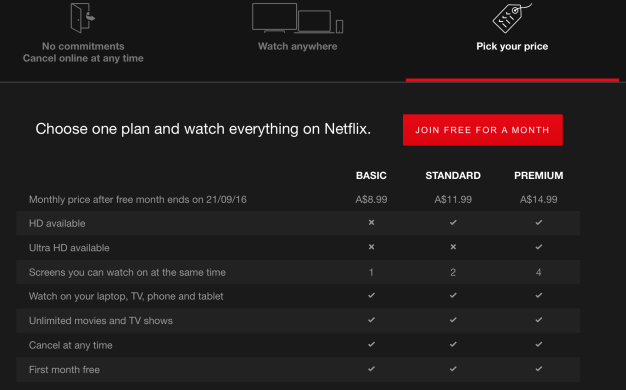Growing up did you ever attempt to attend a movie that you were old enough to see? Or  fake your age just to be able to access a variety of social media platforms?
fake your age just to be able to access a variety of social media platforms?
Well these restrictions can be identified as ‘media regulations’. Media regulation is the control or guidance of mass media by governments and other bodies. It not only monitors what certain age groups can and cannot access, it regulates where we can and cannot use media. For example in Australia it is illegal to use your mobile phone when driving, when working and when in the cinema.
While some think that media regulations can be an ‘inconvenience’, the Australian Government is updating media laws to adapt to an ever changing landscape.
With advancing technology and the rapid growth of the World Wide Web, we now have instant access to any content from around the world. As a result I think it is necessary for these restrictions to be enforced, particularly online.
“The Internet is becoming a popular source of information and entertainment for children. Increasing numbers of schools are coming on-line and material on the Internet targeted at children is burgeoning. As with television, there is increasing community concern that young people are being exposed to pornographic and other inappropriate material such as aggressive marketing on the Internet.[82]Placing or possessing material on the Internet that infringes existing legislation regulating, for example, racial vilification or defamation may be a criminal offence. These laws are difficult to enforce as the originators of Internet material can rarely be identified.“
The instantaneous nature of the internet is revolutionary, however it is becoming a common action that children are neglecting the age restrictions set by websites. For example when I signed up to Facebook, the minimum age was 16 and I was 14. Now social media services such as Facebook and Instagram now require the user to be at least 13-years old.
What is the problem with this but?
An article from the Daily Mail explains that a study in 2014 found that 59% of children are networking at the age of 10. A poll highlighted that 21% of children have posted negative comments and 43% have messaged strangers on social media. It is these statistics that should concern individuals, while developing an online presence is a social norm, at such a young age it diminishes the barrier between their public and personal life.
Furthermore Dr Richard Woolfson explains “children are gaining access to social media  sites at a younger age, which could expose them to content, people or situations that are out of their depth and which they’re not emotionally prepared for“. It is evident that what younger generations are seeing on social media websites is increasingly influencing their daily lives.
sites at a younger age, which could expose them to content, people or situations that are out of their depth and which they’re not emotionally prepared for“. It is evident that what younger generations are seeing on social media websites is increasingly influencing their daily lives.
Online presence can be altered to reflect yourself or to transform into an entire other being. The implications of children being on social media at such a young age is that they can fall into the traps of strangers online. “The capacity for communications to be online, and yet under the radar, is something parents, teachers and policy-makers need to remain aware of“.
In 2014 an incident regarding online stranger danger occurred, where a 12-year-old girl had met and invited an unknown man to her house through online interaction. The platform that was used was the popular messaging app Kik, where the minimum sign up age is 17. A casual conversation had begun between the young girl and old man, he who had been pretending to be younger than his actual age of 32 and eventually led the man to her front-door. Investigators found that this was not the only platform the two were using and he was not the only man she was communicating with, Xbox live had been a popular communication platform for the young girl. Later that year in November Microsoft supplied a 30 day transcript of the girls conversations with strangers.
The offender was immediately jailed and charged, this incident has acted as a cautionary tale in Baltimore to warn children of the implications of their online behaviour.
Media regulation is vital in keeping all media users safe. Age restriction is important to limit young children, it is common that young children who are unaware of online stranger danger, cyberbullying and how permanent their actions are.
 laws in a generation, supporting the viability of our local organisations as they face increasing global competition in a rapidly changing digital landscape.”
laws in a generation, supporting the viability of our local organisations as they face increasing global competition in a rapidly changing digital landscape.”




 he nature of watching sporting
he nature of watching sporting audiences watch the EPL. The way I intend to present the project will be through a range of blogposts, recounting my observations and experiences in different environments. I also want to include public opinion, therefore conducting a survey will also give me insight into where soccer fans prefer to watch their games and how atmosphere effects this.
audiences watch the EPL. The way I intend to present the project will be through a range of blogposts, recounting my observations and experiences in different environments. I also want to include public opinion, therefore conducting a survey will also give me insight into where soccer fans prefer to watch their games and how atmosphere effects this.
 place to stuff your face with buttery goodness.
place to stuff your face with buttery goodness. attending the cinema. With the increased reliance on internet and technology, many ar
attending the cinema. With the increased reliance on internet and technology, many ar
 is now a heavy reliance on ‘digital machines’.
is now a heavy reliance on ‘digital machines’. annoyance of pointless TV commercials”. However when Foxtel announced that they no longer will be showing all Live English Premier League games he was not impressed and his television consumption was cut more than half. “We can stream games but most of the time the streams are unclear and if you have Facebook there is no point waiting for the repeats because someone will have spoiled it,” he said. “It is good publicity for Optus and they are offering more options than what Foxtel ever did, but for those of us who aren’t with Optus it is really annoying because we aren’t left with many secure options.”
annoyance of pointless TV commercials”. However when Foxtel announced that they no longer will be showing all Live English Premier League games he was not impressed and his television consumption was cut more than half. “We can stream games but most of the time the streams are unclear and if you have Facebook there is no point waiting for the repeats because someone will have spoiled it,” he said. “It is good publicity for Optus and they are offering more options than what Foxtel ever did, but for those of us who aren’t with Optus it is really annoying because we aren’t left with many secure options.” their outreach to fans beyond games, live broadcasting and merchandising. They are also tackling social media to reach out to fans and gain a greater viewing. This can be seen through twitter
their outreach to fans beyond games, live broadcasting and merchandising. They are also tackling social media to reach out to fans and gain a greater viewing. This can be seen through twitter 
 Only some of the popular television shows that shaped our childhoods.
Only some of the popular television shows that shaped our childhoods. . “These days TV isn’t a privilege, but when I was growing up TV meant family time, if I was good I was allowed to watch my favourite show for 30minutes a day. After dinner we all had to sit around in the lounge room and spend the rest of our night together, when you and your sister were little we used to do that to but now that everyone has grown up it isn’t like it used to be”.
. “These days TV isn’t a privilege, but when I was growing up TV meant family time, if I was good I was allowed to watch my favourite show for 30minutes a day. After dinner we all had to sit around in the lounge room and spend the rest of our night together, when you and your sister were little we used to do that to but now that everyone has grown up it isn’t like it used to be”.
